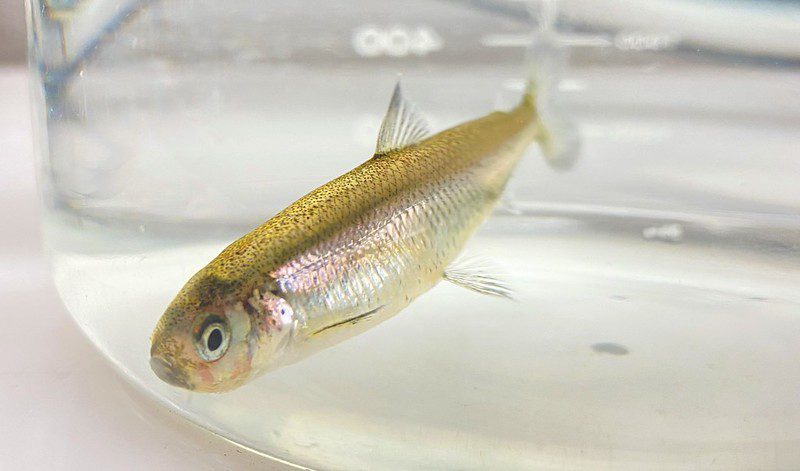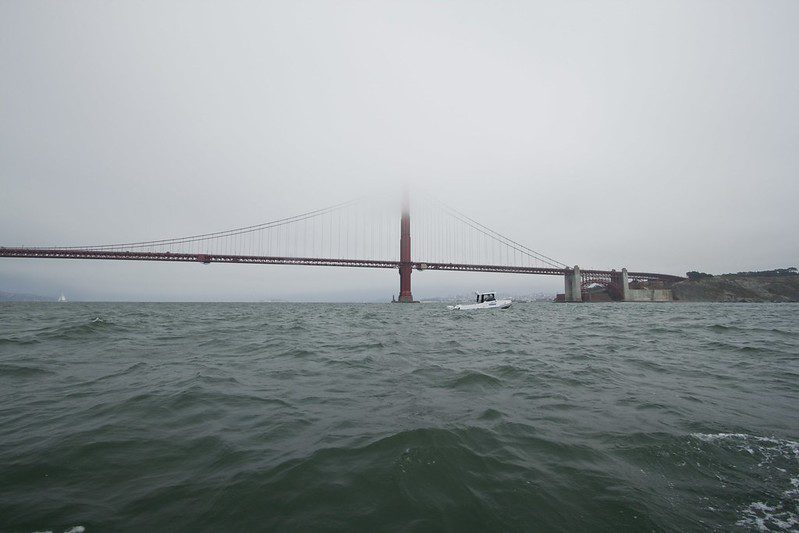Monday February 13, 2023

Recent research has revealed that the habitat needs of endangered delta smelt (Hypomesus transpacificus) may be more complex than what is accounted for in current management efforts. One ongoing effort intended to aid delta smelt recovery is the “Fall X2 Outflow Action,” which is a strategic increase in outflow into the Sacramento-San Joaquin Delta to improve habitat for delta smelt during a key life history period when adult fish are maturing prior to their spawning migration. This increase in outflow is thought to improve the quantity and quality of delta smelt habitat by maintaining flows to sustain a low-salinity zone, in this case, a region with an average salinity less than 2 parts per thousand (a location referred to as X2). The position of X2 depends on the previous water year. Following a wet year or normal year, X2 is located approximately 74 kilometers to 81 kilometers upstream of the Golden Gate Bridge. However, the findings of a recent study suggest that managing delta smelt habitat by adjusting the position of X2 may not be as effective as previously thought (Hendrix et al. 2022).
The study used 35 years of data from the California Department of Fish and Wildlife’s Fall Midwater Trawl surveys to examine which factors may have an impact on delta smelt occupancy – or their presence in different habitats – during the fall. They found that delta smelt movement and behavior patterns were most closely associated with salinity and temperature. Although there is complex variation in salinity levels within the X2 region, the study revealed that the position of X2 was not a good predictor of delta smelt occupancy. In fact, they found that patterns of occupancy were similar in both wet and dry years, suggesting that utilizing the position of X2 as a management tool may be an oversimplification of the habitat requirements of the species. Additional factors that were found to influence delta smelt occupancy patterns, albeit to a lesser degree, were the presence of threadfin shad (Dorosoma petenense, a non-native competitor) as well as an index of predation intensity developed by fisheries experts. Further, the study utilized unique methods to examine factors that affected the ability of the trawling surveys to detect delta smelt. Detection probability is important to consider when using physical capture sampling gears, because it results in less biased estimates of occupancy. They were able to determine that decreased water clarity in the Sacramento-San Joaquin Delta, a hypothesized contributor to the species’ decline, likely does not affect habitat use, but may make it more difficult for biologists to effectively detect delta smelt during sampling events.

This is not the only recent study to examine the role of X2 as a management tool for delta smelt. Given the precipitous decline in the population over the last few decades despite intensive management efforts, it appears that additional data collection efforts and management tools may be warranted. Due to their rarity, delta smelt are notoriously difficult to capture in typical trawl samples. This study suggests that it may be beneficial to further investigate changes to existing methods for capturing delta smelt that provide a more accurate representation of population status and habitat occupancy. The authors of this study also suggest continuous monitoring of food web dynamics in the Bay-Delta to assess how predation, competition, and the presence of invasive species impact delta smelt. More importantly, future management strategies should focus on increasing habitat quality in regions where delta smelt occupancy probabilities have been consistently high in spring and autumn, including Cache Slough, the lower Sacramento River, and Suisun Bay. Shifting focus from X2-centered management and exploring other factors influencing habitat availability and quality may ultimately be the best path forward for delta smelt recovery and research efforts.
This post was featured in our weekly e-newsletter, the Fish Report. You can subscribe to the Fish Report here.
